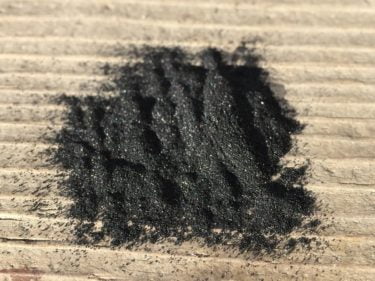When I was growing up, back in the Eighties, charcoal was only really found in art classes and barbeques. More recently, activated charcoal has become a trendy addition to food, drinks and even toothpaste. Activated charcoal is simply regular charcoal that has been heat-treated to increase its surface area and improve the adsorption of toxins. The idea is that this activated charcoal can help detox your body, and in a way, these claims are valid (for a very specific definition of detox). Activated charcoal is often used in overdose and poisoning cases, where it binds to the chemical intoxicant, reducing its absorption into the body. But what about the toothpaste?
Making your own toothpaste has become a new health trend. This is in part due to various well-being fads, but also because of a genuine and rational concern for the environment. Toothpaste tubes have traditionally been non-recyclable, and we get through millions of tubes per year. The UK toothpaste market alone was estimated to be worth £541m in 2019.
A quick Google search shows countless recipes for charcoal or charcoal and bicarbonate toothpaste, but charcoal in toothpaste is nothing new. Historically soot was used to keep teeth clean (which sounds pretty gross, but is probably better than using urine). And because charcoal is a natural product, it avoids any of those nasty artificial chemicals, so must be a good thing, right? Let’s take a closer look.
Toothpaste is something that (most of us) use on a daily basis, but surprisingly few people actually know what we’re putting in our mouths. If we look at your standard tube of toothpaste’s main ingredients, we’ll find some key components.
A standard toothpaste will be water-based and contain a variety of detergents (usually sodium lauryl sulphate or SLS), flavourings, colours, preservatives and humectants. The SLS in toothpaste is what makes it foam, but sensitivity to SLS is becoming more common. If you’re having trouble with your toothpaste, you might want to hunt out one that’s SLS free.
The most important active ingredient is fluoride, usually in the form of sodium fluoride, although you may see sodium monoflurophosphate or stannous fluoride mentioned. Your toothpaste should contain around 1450 ppm fluoride for it to be effective in preventing decay. In addition to this, many toothpastes will have added desensitising agents such as zinc citrate or potassium polyphosphate.
Some form of cleaning agent, usually silica or calcium carbonate, is what actually cleans the teeth. These compounds are mildly abrasive and can compose around 50% of what’s in the tube. Charcoal toothpastes also add charcoal into the mix (obviously). Moreover, many of these toothpastes proudly claim that they’re free from fluoride.

Charcoal is more abrasive than the cleaning agents used in regular toothpaste. The concern is that the routine use of charcoal to brush your teeth will roughen the tooth’s surface, weakening the structure. This weakness, combined with the lack of protection from fluoride, could theoretically lead to a higher risk of decay. By routinely using a toothpaste with a high level of charcoal in it, you could be actively damaging your teeth. This is particularly likely if you have some form of previous damage from acid erosion, toothbrush abrasion (from overbrushing the teeth) or exposed dentine from gum recession.
In a surprising turn of events, most media coverage on charcoal toothpaste has been relatively negative. Much of the reporting focuses on the lack of evidence for ‘detoxification’ of the mouth or any other part of the body. There is also an awareness of the potentially damaging effect of charcoal on the dentition.
Charcoal toothpaste has gained so much attention that the British Dental Journal published an article about them in 2019 (full disclosure: I write a regular ethics column for the BDJ). The researchers found that only 8% of the charcoal-based toothpastes that were readily available contained fluoride. Many charcoal containing toothpastes claim to be able to whiten the teeth. While the charcoal’s abrasive nature may remove any surface staining from the teeth, it’s not going to change the colour of the underlying tooth. The charcoal may even stain the edges of any white fillings. It was also found that, contrary to the detox claims, charcoal toothpaste did not affect the freshness breath in the long term.
If you’re thinking of making your own toothpaste, for environmental or health reasons, I would urge you to reconsider. Most of the recipes I’ve seen have seen contain just charcoal and a few other ingredients to make it easier to apply to the teeth and taste a little better. This is going to have precisely zero protective effect on your teeth and will ultimately damage them. There are now multiple alternatives on the market, some from big-name brands who are starting to make biodegradable tubes, as well as other smaller brands who make toothpaste tablets. You can now even Terracycle all your oral health products. Whatever you choose, make sure there’s the right quantity of fluoride in the product –1440ppm for an adult, less for children.


